-
 Bitcoin
Bitcoin $106,754.6083
1.33% -
 Ethereum
Ethereum $2,625.8249
3.80% -
 Tether USDt
Tether USDt $1.0001
-0.03% -
 XRP
XRP $2.1891
1.67% -
 BNB
BNB $654.5220
0.66% -
 Solana
Solana $156.9428
7.28% -
 USDC
USDC $0.9998
0.00% -
 Dogecoin
Dogecoin $0.1780
1.14% -
 TRON
TRON $0.2706
-0.16% -
 Cardano
Cardano $0.6470
2.77% -
 Hyperliquid
Hyperliquid $44.6467
10.24% -
 Sui
Sui $3.1128
3.86% -
 Bitcoin Cash
Bitcoin Cash $455.7646
3.00% -
 Chainlink
Chainlink $13.6858
4.08% -
 UNUS SED LEO
UNUS SED LEO $9.2682
0.21% -
 Avalanche
Avalanche $19.7433
3.79% -
 Stellar
Stellar $0.2616
1.64% -
 Toncoin
Toncoin $3.0222
2.19% -
 Shiba Inu
Shiba Inu $0.0...01220
1.49% -
 Hedera
Hedera $0.1580
2.75% -
 Litecoin
Litecoin $87.4964
2.29% -
 Polkadot
Polkadot $3.8958
3.05% -
 Ethena USDe
Ethena USDe $1.0000
-0.04% -
 Monero
Monero $317.2263
0.26% -
 Bitget Token
Bitget Token $4.5985
1.68% -
 Dai
Dai $0.9999
0.00% -
 Pepe
Pepe $0.0...01140
2.44% -
 Uniswap
Uniswap $7.6065
5.29% -
 Pi
Pi $0.6042
-2.00% -
 Aave
Aave $289.6343
6.02%
Is breaking through the upper track of the Bollinger Band overbought? Should I take profits?
A breakout above the upper Bollinger Band in crypto trading can signal either overbought conditions or strong momentum, depending on context like RSI, volume, and trend strength.
Jun 18, 2025 at 05:49 am
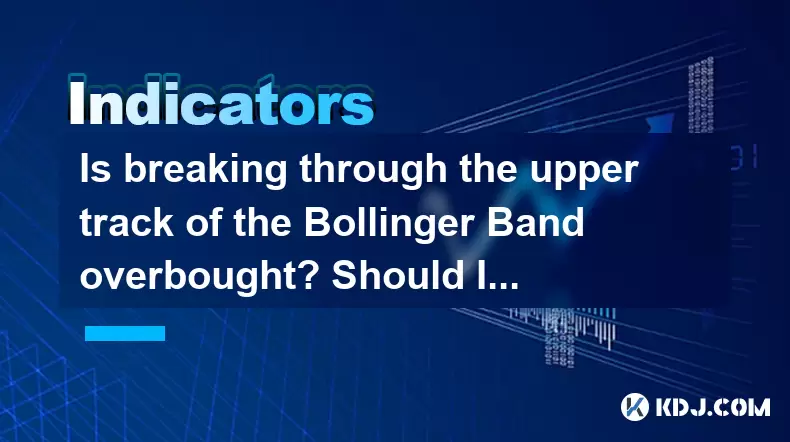
Understanding Bollinger Bands and Their Role in Cryptocurrency Trading
Bollinger Bands are a widely used technical analysis tool among cryptocurrency traders. They consist of three lines: the middle band, which is typically a 20-day simple moving average (SMA), and two outer bands that are placed at standard deviations above and below the middle line. These bands expand and contract based on price volatility, making them dynamic rather than static.
In the context of cryptocurrency trading, where price swings can be dramatic and frequent, Bollinger Bands help identify overbought or oversold conditions. When the price touches or moves beyond the upper band, it may signal that the asset is overbought. However, this does not always mean a reversal is imminent. In strong uptrends, prices can ride along the upper band for extended periods.
What Does Breaking Through the Upper Band Indicate?
When the price of a cryptocurrency breaks through the upper Bollinger Band, it often signals strength in the current trend. This breakout could indicate that buyers are aggressively pushing the price higher, potentially due to positive news, increased demand, or broader market sentiment.
However, some traders interpret this as a sign that the asset might be overbought, suggesting that a short-term pullback could occur. The key lies in understanding the broader context. If the breakout occurs during a strong bullish phase with high volume, it may continue. On the other hand, if the move lacks momentum or coincides with negative indicators like RSI divergence, caution is warranted.
It's crucial to note that Bollinger Bands should not be used in isolation. Combining them with other tools such as Relative Strength Index (RSI), MACD, or volume indicators provides a more comprehensive picture.
How to Determine Whether It’s Overbought or Just Momentum
To assess whether a breakout above the upper Bollinger Band is a genuine overbought condition or just part of ongoing momentum:
- Check RSI levels: If the RSI is above 70, especially if it's approaching or exceeding 80, it supports the idea that the asset is overbought.
- Analyze candlestick patterns: Look for signs of rejection at highs, such as long upper wicks or bearish engulfing patterns.
- Monitor volume: A sudden drop in volume after a sharp rise suggests weakening momentum.
- Evaluate trend strength: Use tools like Moving Average Convergence Divergence (MACD) to see if the trend is still intact.
These additional checks help avoid premature exits from potentially profitable trades.
Should You Take Profits After an Upper Band Breakout?
Deciding whether to take profits after a price break above the upper Bollinger Band depends on several factors:
- Your trading strategy: Day traders may prefer to secure gains quickly, while swing traders might hold if other indicators confirm strength.
- Risk-to-reward ratio: If your target has been met or exceeded, taking partial profits could be prudent.
- Market structure: In highly volatile markets like crypto, trailing stops or scaling out of positions can protect profits without fully exiting early.
- Position size: Larger positions may warrant partial profit-taking to reduce exposure.
Some traders use Bollinger Band "rides"—where price remains near or slightly above the upper band—as a continuation pattern rather than a reversal signal. In such cases, exiting too early could result in missed gains.
Practical Steps for Managing Positions During a Bollinger Band Breakout
If you're facing a situation where the price of a cryptocurrency has broken through the upper Bollinger Band, here are actionable steps to consider:
- Review your entry point and stop-loss level: Ensure that your risk parameters remain valid.
- Assess recent chart behavior: Are there signs of exhaustion or continued strength?
- Use trailing stops: These allow you to lock in gains while giving room for the trend to continue.
- Scale out of your position: Sell a portion of your holdings while keeping the rest active.
- Wait for confirmation of a reversal: This could come in the form of a close below the middle band or bearish candlestick formations.
Each decision should align with your overall trading plan and risk tolerance. Emotional decisions often lead to poor outcomes, so sticking to predefined rules is essential.
Frequently Asked Questions (FAQs)
Q1: Can Bollinger Bands alone determine overbought conditions accurately?
No, Bollinger Bands should not be used in isolation. They work best when combined with other indicators like RSI, MACD, or volume analysis to provide a more accurate assessment of overbought or oversold conditions.
Q2: Is it possible for a cryptocurrency to stay overbought for a long time?
Yes, especially during strong bull runs or parabolic moves. Assets like Bitcoin or Ethereum have historically shown instances where they remained above the upper Bollinger Band for extended periods without immediate reversals.
Q3: How do I differentiate between a false breakout and a real one on the Bollinger Band?
A false breakout often lacks volume support and may show candlestick rejection patterns like shooting stars, spinning tops, or bearish engulfing candles. Real breakouts usually coincide with increasing volume and follow-through in price action.
Q4: Should I adjust the settings of my Bollinger Bands for different cryptocurrencies?
Yes, adjusting the period or standard deviation multiplier can improve performance across different assets. For example, more volatile cryptos may benefit from a higher standard deviation setting (e.g., 2.5 instead of 2) to reduce false signals.
Disclaimer:info@kdj.com
The information provided is not trading advice. kdj.com does not assume any responsibility for any investments made based on the information provided in this article. Cryptocurrencies are highly volatile and it is highly recommended that you invest with caution after thorough research!
If you believe that the content used on this website infringes your copyright, please contact us immediately (info@kdj.com) and we will delete it promptly.
- Pi Network, KYC Sync, and Pi2Day: A Deep Dive into the Latest Developments
- 2025-06-20 18:45:13
- Ethereum, Bitcoin, and the Price Prediction Game: What's Hot Now?
- 2025-06-20 18:25:13
- Bitcoin Price Breakout Imminent? Decoding the Crypto Market's Next Big Move
- 2025-06-20 18:45:13
- Cracking the Cross-Chain Code: Interoperability and Web3 UX
- 2025-06-20 18:25:13
- Blockchain, P2P Games, and Marketplaces: A New Era of On-Chain Economies
- 2025-06-20 18:57:14
- Arizona's Bitcoin Reserve Bill: Senate Vote Revives Crypto Debate
- 2025-06-20 18:57:14
Related knowledge
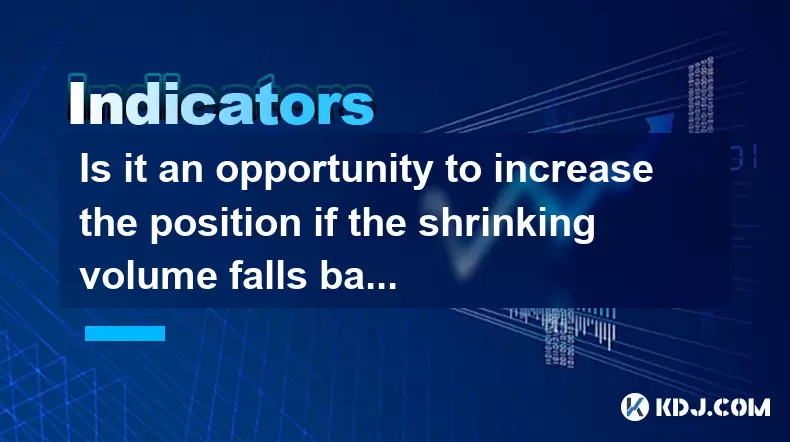
Is it an opportunity to increase the position if the shrinking volume falls back to the rising trend line?
Jun 20,2025 at 06:22pm
Understanding the Shrinking Volume in Cryptocurrency TradingIn cryptocurrency trading, volume is one of the most critical indicators used to confirm price movements and trends. When traders observe a scenario where volume shrinks during a pullback, it can signal either a lack of selling pressure or an imminent reversal. This phenomenon often occurs when...
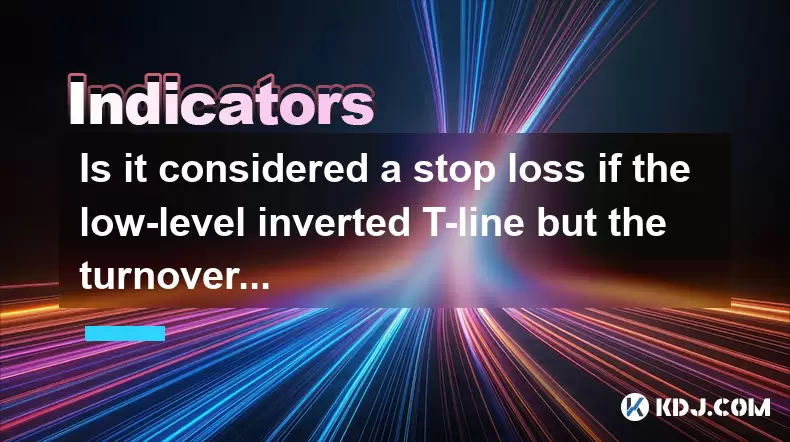
Is it considered a stop loss if the low-level inverted T-line but the turnover rate is extremely low?
Jun 20,2025 at 04:49pm
Understanding the Low-Level Inverted T-Line in Cryptocurrency ChartsIn technical analysis within the cryptocurrency market, candlestick patterns are crucial indicators for traders to predict potential price movements. The low-level inverted T-line is a specific type of candlestick pattern that often raises questions among traders. This pattern typically...
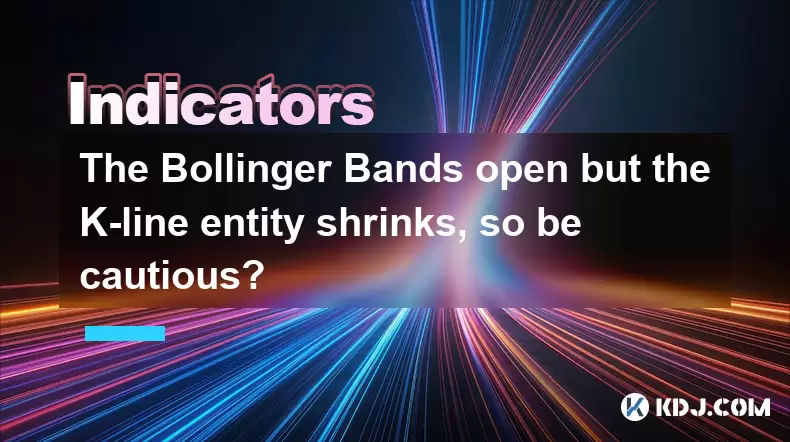
The Bollinger Bands open but the K-line entity shrinks, so be cautious?
Jun 20,2025 at 06:08pm
Understanding the Bollinger Bands and K-Line RelationshipBollinger Bands are a popular technical analysis tool used in cryptocurrency trading. They consist of a moving average (usually 20-period) with two standard deviation lines plotted above and below it. These bands dynamically adjust to price volatility, expanding when volatility increases and contr...
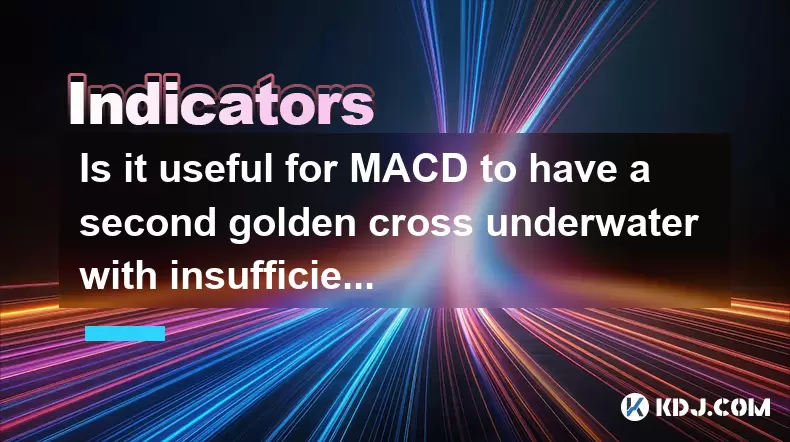
Is it useful for MACD to have a second golden cross underwater with insufficient volume?
Jun 20,2025 at 06:49pm
Understanding the MACD and Its Golden CrossThe Moving Average Convergence Divergence (MACD) is a popular technical analysis tool used by traders to identify potential buy or sell signals. It consists of three components: the MACD line, the signal line, and the histogram. The golden cross occurs when the MACD line crosses above the signal line, often see...
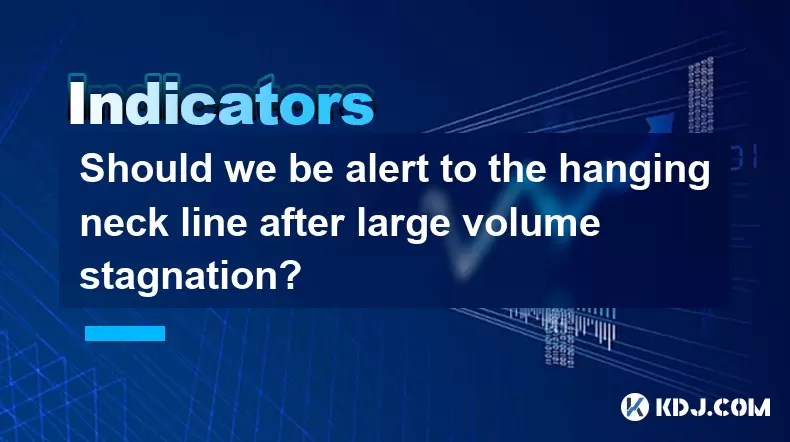
Should we be alert to the hanging neck line after large volume stagnation?
Jun 20,2025 at 07:01pm
Understanding the Hanging Neck Line in Cryptocurrency TradingThe hanging neck line is a technical analysis pattern that often appears on candlestick charts and is considered a bearish reversal signal. In the context of cryptocurrency trading, recognizing this formation can be crucial for traders looking to avoid potential price drops after a period of u...

Is it a real drop when KDJ crosses but the trading volume shrinks?
Jun 20,2025 at 03:49pm
Understanding KDJ and Its Role in Cryptocurrency TradingIn the realm of cryptocurrency trading, technical analysis plays a crucial role in identifying potential price movements. The KDJ indicator, also known as the stochastic oscillator with a J line added for momentum confirmation, is widely used by traders to gauge overbought or oversold conditions. I...

Is it an opportunity to increase the position if the shrinking volume falls back to the rising trend line?
Jun 20,2025 at 06:22pm
Understanding the Shrinking Volume in Cryptocurrency TradingIn cryptocurrency trading, volume is one of the most critical indicators used to confirm price movements and trends. When traders observe a scenario where volume shrinks during a pullback, it can signal either a lack of selling pressure or an imminent reversal. This phenomenon often occurs when...

Is it considered a stop loss if the low-level inverted T-line but the turnover rate is extremely low?
Jun 20,2025 at 04:49pm
Understanding the Low-Level Inverted T-Line in Cryptocurrency ChartsIn technical analysis within the cryptocurrency market, candlestick patterns are crucial indicators for traders to predict potential price movements. The low-level inverted T-line is a specific type of candlestick pattern that often raises questions among traders. This pattern typically...

The Bollinger Bands open but the K-line entity shrinks, so be cautious?
Jun 20,2025 at 06:08pm
Understanding the Bollinger Bands and K-Line RelationshipBollinger Bands are a popular technical analysis tool used in cryptocurrency trading. They consist of a moving average (usually 20-period) with two standard deviation lines plotted above and below it. These bands dynamically adjust to price volatility, expanding when volatility increases and contr...

Is it useful for MACD to have a second golden cross underwater with insufficient volume?
Jun 20,2025 at 06:49pm
Understanding the MACD and Its Golden CrossThe Moving Average Convergence Divergence (MACD) is a popular technical analysis tool used by traders to identify potential buy or sell signals. It consists of three components: the MACD line, the signal line, and the histogram. The golden cross occurs when the MACD line crosses above the signal line, often see...

Should we be alert to the hanging neck line after large volume stagnation?
Jun 20,2025 at 07:01pm
Understanding the Hanging Neck Line in Cryptocurrency TradingThe hanging neck line is a technical analysis pattern that often appears on candlestick charts and is considered a bearish reversal signal. In the context of cryptocurrency trading, recognizing this formation can be crucial for traders looking to avoid potential price drops after a period of u...

Is it a real drop when KDJ crosses but the trading volume shrinks?
Jun 20,2025 at 03:49pm
Understanding KDJ and Its Role in Cryptocurrency TradingIn the realm of cryptocurrency trading, technical analysis plays a crucial role in identifying potential price movements. The KDJ indicator, also known as the stochastic oscillator with a J line added for momentum confirmation, is widely used by traders to gauge overbought or oversold conditions. I...
See all articles

























































































